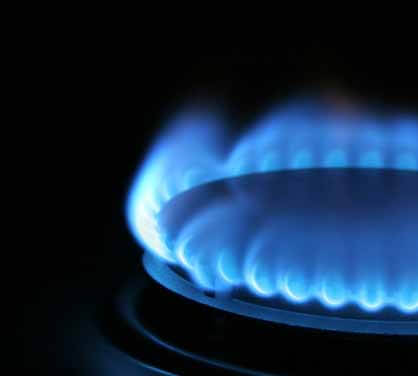- Residential Solar
- Commercial Solar
- Batteries
- Electric Vehicle Chargers
- Solar Rebates
- Solar Tools
- Solar Product Reviews
- Blog
- Compare Energy Deals
- About Solar Market
RebatesSolar & Battery Rebates, Subsidies & Incentives in Australia
GET THE BIGGEST DISCOUNT ON YOUR SYSTEM
AUSTRALIAN SOLAR REBATES
We breakdown all State & Federal incentives and solar rebates so you can get the best deal.
Federal Government Rebates
The Federal Government’s STC Rebate (Small Scale Technology Certificates) provides a big upfront discount on your solar system.
Find everything that you need to know about the federal STC rebate below and get the best price for your system.
Firstly, “Small-Scale Technology Certificates” (known as STCs) are technically an incentive scheme, not a solar rebate. Semantics aside, STCs deliver you an upfront discount when you install a solar power system at your home. These certificates are traded (usually by your installer) in exchange for a dollar amount which is then deducted from the cost of your installation.
The number of STCs that you’re entitled to decreases on the 1st January each year. In short, the longer you wait to install solar, the smaller your discount from the STCs will be.
Only Solar Accreditation Australia (SAA) accredited installers are able to offer STC discounts on your solar system. This is great news for you if you get 3 quotes with Solar Market because all of the solar installers we connect you with are accredited by Solar Accreditation Australia.
In 2011, the Australian Federal Government introduced the Small-Scale Renewable Energy Scheme (or SRES) to encourage homeowners and businesses to install solar systems. STCs were introduced as the mechanism to deliver the financial incentive to people who install solar systems less than 100kW in size. (For systems 100kW and bigger, Large-scale Generation Certificates, known as LGCs, apply).
An STC discount is generally applied on your quote from your installer. You will usually see a total cost, the STC discount applied, and the final out-of-pocket expense after the discount. This discounted amount is generally what you have to actually pay the installer. Sometimes, you might not see the STC amount on your bill because it’s automatically applied, but you can always double check with your installer.
When your system is installed, your installer will probably ask you to assign your STCs over to them so they can then trade them in exchange for the dollar amount.
Let’s take a look at how the STCs themselves are determined below.
The number of STCs your solar system is eligible for is based on the expected amount of green electricity your new solar system will generate.
4 things impact on the number of STCs and amount of discount you can receive:
Factor 1 – The size of your solar system
The bigger the system, the more green electricity your system will produce, and the more STCs you are eligible for.
Factor 2 – Where you live
When it comes to calculating your STCs, where you live is known as your “Zone.” Your Zone is an important factor in determining how many STCs you’re eligible for, and it’s based on your postcode.
As you can see below, Australia has been separated into 4 zones. This has been done to show you how much solar energy can be generated by systems within a specific area.
Each zone has its own rating; the higher the rating, the more STCs you’ll be eligible for and the higher the discount you’ll get back from your STCs.
This is because you’ll receive more sunlight and therefore produce more clean energy when you’re in Darwin (Zone 2) compared to Melbourne and Hobart (Zone 4).
Factor 3 – When you install your system
When planning your system, it’s important to know that the number of STCs that you’re entitled to decreases on the 1st January each year, which means the discount you get is likely to be lower too.
This is called the deeming period, and it is calculated against when the Australian Federal Government plans to completely phase out the scheme, which is the end of 2030. The total number of years that are left before it’s phased out is your specific deeming period. In 2024, it’s 7 years to go until it’s phased out, in 2025, there will be 6 years to go, and so on.
Use the table below to figure out your solar rebate deeming period.
| YEAR SOLAR (PV) SYSTEM INSTALLED | DEEMING PERIOD (YEARS) |
|---|---|
| Before 2016 | 15 |
| 2016 | 15 |
| 2017 | 14 |
| 2018 | 13 |
| 2019 | 12 |
| 2020 | 11 |
| 2021 | 10 |
| 2022 | 9 |
| 2023 | 8 |
| 2024 | 7 |
| 2025 | 6 |
| 2026 | 5 |
| 2027 | 4 |
| 2028 | 3 |
| 2029 | 2 |
| 2030 | 1 |
Factor 4 – STC Value
While the deeming period shows you that the number of STCs you can get each year decreases, the actual dollar value of each individual STC also fluctuates. Your solar installer will give you the exact value when you chat to them, or check out The Clean Energy Regulator to learn more about how they’re traded.
When you take all this into account the number of STCs you’re eligible for is dependent on how big your system is, but also where you live and when you have your solar power system installed.
Start By Calculating Your Number of STCs
The reason it’s important to know about the size of your system, your zone and the deeming period is because each of these factors are part of the STC rebate calculation.
The calculation itself is as follows:
For Example
Let’s apply this STC rebate formula to a real life example.
Greg is planning on installing a 6.6kW solar system on his home in Cairnes, QLD (zone rating 1.382) in 2022 (deeming period 9) and wants to know how many STCs will be available to him.
Greg simply has to multiply these values all together, round down, and he’ll have the number of STCs available to him, in this case 82.
Calculate Your STC Rebate Discount
Once you have your number of STCs, you can multiply that by the dollar value STCs are being traded for at that moment in time to get your estimated discount amount. You can check the current market value of STCs on various trading platforms, like Demand Manager.
This dollar amount will be the estimated STC rebate you’ll get on installation day. Go you!
If you’re wanting a rough example STC value to get you going, $39 an STC is about right these days.
Going back to our example, Greg can expect a dollar discount of $3,198 on his 6.6kW system if he gets $39 an STC!
Remember, the number of STCs awarded decreases each year until 2030. The longer you wait, the fewer STCs you’ll receive and the lower your discount at installation. Use the example below as a reference to get a better idea of the trend and how it will affect the final price of your system.
State Government Rebates
We've got the most important information you need to know about solar rebates available in your state.
In addition to the Federal Government STC incentive, some states offer extra solar rebates. Click below to learn if there is a solar panel rebate or solar battery rebate on offer from your State Government.
Learn more about Solar Rebates in the Australian Capital Territory.
Learn about Battery Rebates in the Australian Capital Territory.
Learn more about Solar Rebates in New South Wales.
Learn about Battery Rebates in New South Wales.
If you’re a homeowner, business or not-for-profit organisation in the Northern Territory, we’ve got great news for you!
In addition to the Australian Federal Government’s STC incentive, in the NT you also receive the Home & Business Battery Scheme.
Learn more about Battery Rebates & Incentives in the Northern Territory here.
Learn more about Solar Rebates in Queensland.
Currently, there are no rebates on offer for battery storage systems in Queensland.
Last updated November 2024
Learn more about Solar Rebates in South Australia.
Learn about Battery Rebates in South Australia.
Apart from the Australian Federal Government’s STC incentive, there are currently no state-specific rebates to help with the upfront costs of installing solar in Tasmania.
However, through the Energy Saver Loan Scheme, Tasmanian residents can take advantage of an interest free loan to help fund the purchase and installation of energy efficient products and upgrades.
Products available to be financed under the Energy Saver Loan Scheme include solar & batteries, electric heat pumps, solar hot water systems and EV charging.
Loans of between $500 – $10,000 are available, with re-payment terms from 1 to 3 years.
Learn more about Battery Rebates in Tasmania.
Learn more about Solar Rebates in Victoria.
Learn about Battery Rebates in Victoria.
Learn more about Solar Rebates in Western Australia.
Currently, there are no rebates on offer for battery storage systems in Western Australia.
Last updated November 2024
Get 3 Free Solar Quotes
Get 3 Solar Power Quotes (v1.5) (Image Choice Version) Dark Mode – Orange Icons
from installers in your local area!
Top Solar Topics
Top solar topics



